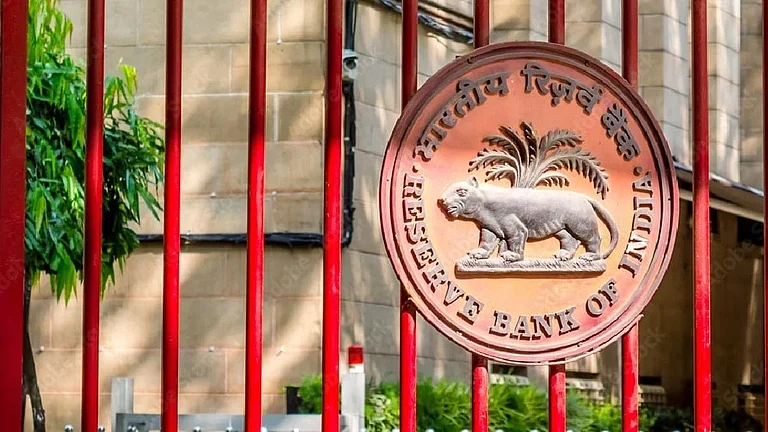By Sandeep Katiyar, Co-Founder & CFO, Finhaat
Like an advertisement from yesteryear where a TV reporter popped up on the screen and asked, "Does your toothpaste have salt?" Today, most people ask each other, "Do you have insurance?" Despite this growing awareness, the numbers tell a different story, one that urgently calls for increased insurance coverage across India. India is the 10th largest life insurance market globally, the 4th largest general insurance market in Asia, and the 14th largest globally. Yet, there remains a stark difference in insurance penetration between India's rural areas and urban centers.
In a recent survey by one of the top insurance companies, working hand-in-hand with a leading marketing data and analytics firm, uncovered some eye-opening stats. In urban India, a solid 73% of people have life insurance. Pretty impressive, right? But, and it's a big but, in rural areas, that number plummets to just 22%. Yep, that's right—only 22%! This huge gap is a real eye-opener. It clearly shows that as a nation, we've got to step up our game to increase insurance coverage in rural areas. We're looking at customized approaches, making products more accessible, and truly reaching out to make a difference. It's not just about the statistics; it's about making sure everyone, regardless of where they live, has the financial protection they need.
The survey also revealed that rural India scores only 12 points on the Protection Quotient scale (The India Protection Quotient (IPQ) indicates Financial Preparedness in urban India against an unforeseen future.), compared to 43 points for urban areas. Several reasons including not enough savings, difficult to understand processes, high premiums, poor claim experience have been at the back of low uptake of insurance. Right now, millions of everyday Indian families and small businesses are on the lookout for ways to secure their financial future. But there's a big question: How can the government and private sector join forces to close this gap and make sure everyone has solid insurance coverage?
Glancing at the Gallery: What the Indian Insurance Market Has for Exhibition
Over the last 20 years, with a little help from supportive government policies, India’s insurance sector has really taken off. We’ve seen impressive growth thanks to more private companies getting involved and better ways of distributing insurance products. Just in FY24 alone, non-life insurance players saw a 14.86% jump in premium income, reaching Rs. 1,43,802 crore, or about US$ 17.29 billion. This surge was mostly due to high demand for health and motor policies. And it’s not just non-life insurance that’s growing—life insurance is seeing a big rise too. Between April and February 2024, new business premiums for life insurers hit Rs. 317,746 crore, roughly US$ 38.2 billion.
So, even with all the impressive growth we just talked about, insurance penetration in India is still pretty low. We’re looking at only 4% of the GDP in FY23. Breaking it down, life insurance makes up 3%, and non-life insurance is just 1%. This really highlights the huge potential for growth, especially in rural areas where insurance coverage is much lower than in cities.
But it’s not just about the numbers. India’s insurance industry is also making big strides in tech innovation. We’re now the second-largest Insurtech market in the Asia-Pacific region, grabbing 35% of the US$ 3.66 billion in Insurtech investments. This tech boost is super important for closing the gap between urban and rural insurance coverage, making sure financial protection reaches everyone.
Private Players Driving Insurance Penetration
The private sector has played a pivotal role in expanding insurance penetration across India, contributing to the dynamic growth of the industry. The market share of private companies in the non-life insurance market rose significantly from 15% in FY04 to 49.3% in FY21, illustrating their growing influence. Private players are also focusing on innovative products to meet the evolving needs of the market.
New-age, tech based end-to-end financial product companies, which are public-spirited to the core, are leading the charge. These companies, through their commitment to innovation and customer-centric approaches, are transforming the insurance landscape. For instance, some companies are creating advanced technological models and rolling out innovative products that cater specifically to underserved rural populations, ensuring that even the most remote areas have access to vital insurance services.
The regulatory environment has also supported the growth of private players. India increased the foreign direct investment (FDI) limit in the insurance sector from 26% in 2000 to 49% in 2014, and further to 74% in the Union Budget of February 2021. This policy change has facilitated greater investment and competition, driving innovation and improving service delivery in the industry. By leveraging these favorable conditions, new-generation financial product companies are setting new benchmarks in the sector, striving to achieve higher penetration and broader coverage across the country.
Government Initiatives: A Safety Net Woven Tighter
So, let’s talk about some impactful initiatives. The Interim Budget for 2024-25 is all about boosting farmers' incomes and resilience. It’s providing financial aid to 11.8 crore farmers and crop insurance for 4 crore farmers, along with more investment in post-harvest activities.
The Union Budget 2023-24 has a plan to limit income tax exemptions on high-value life insurance policies, aiming for better-targeted tax concessions. And the Pradhan Mantri Fasal Bima Yojana (PMFBY) is a game-changer for crop insurance, significantly increasing premium income and offering crucial protection against natural disasters. Then there's Ayushman Bharat (AB PMJAY), which gives health cover of Rs. 5 lakh per family per year for secondary and tertiary care, helping to reduce medical expenses for households.
In FY23, insurance coverage was provided for 44.6 crore people under the PM Suraksha Bima Yojana and PM Jeevan Jyoti Yojana. Plus, the Union Budget 2021 upped the foreign direct investment (FDI) limit in the insurance sector from 49% to 74%, attracting more investment and fostering a competitive market. The Insurance Regulatory and Development Authority of India (IRDAI) has also made it easier to get digital insurance policies through DigiLocker, making policy management more accessible.
Wrapping up the formalities: Insuring a Bright Future
For a parting word, the combined efforts of private companies and government initiatives are really building a strong, inclusive insurance panorama in India. Some of the next gen innovative financial product platforms are doing a great job of closing the gap between urban and rural insurance access. They're using technology and strategic partnerships to make sure everyone, no matter where they live, gets the protection they need. As this industry keeps growing, the main goal is to make insurance accessible, affordable, and effective for all. It’s all about moving towards a safer, more insured future for India.
(Disclaimer: Views expressed are the author’s own, and Outlook Money does not necessarily subscribe to them. Outlook Money shall not be responsible for any damage caused to any person/organisation directly or indirectly.)













